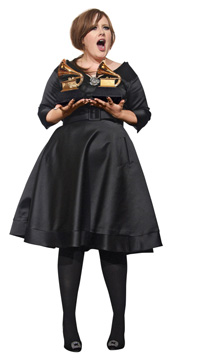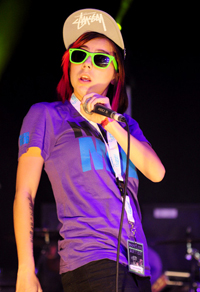
Pop Music Genre

Genre, as you should well know by now, is the classification of a text according to its style and content, and possibly its form and manner of production. Of all the different media, pop music is the one most dependent on genre, and which includes the most wildly different genres of texts. Genres are continually being invented, crossed and revisited, and the process of categorisation is an important one for the producers and fans of the music alike. Some of these categorisations are just wordplay (see above) and others carry with them a complex set of definitions that are rigidly enforced by aficionados (the sub genres of house music being a good example - never ask a DJ).
Broadly speaking, most music falls into one of these categories:
- Pop (including global categories like Europop, Arabic pop, Cantopop, J-Pop and K-Pop)
- Dance
- R&B
- Hip-Hop/Rap
- Rock
- Punk
- Country & Western
- Folk
- Jazz
- Blues
- Latin
- Gospel
- Reggae
- New Age
Each of these categories contains a myriad of sub-genres, and there are plenty of hybrids and mash-ups. However, each of these genres has unique musical characteristics (rhythm, instruments used for melody, lyric and vocal style), and can be associated with other factors, such as clothing, hair and lifestyle. Each genre has specific sites of institutional support, including performance spaces (e.g. nightclubs), radio stations, specialist record shops, magazines and festivals.
Genre and Artist Image


Image is a key paradigm for music genre, with an artist's look categorising them before they start singing or playing. For an artist or band to truly fit a genre category, they must be represented as doing so visually, on record sleeves, publicity photos and in music videos.
Look can be as generic as sound: it is difficult to distinguish between many hip hop videos, all featuring baggily dressed homeboys sitting on steps or porches outside houses in a generic 'hood, swinging their arms and smiling at the booty passing by. Or perhaps driving slowly in big old open-topped cars round a generic 'hood, swinging their arms and waving at the booty they pass by. Similarly, all-girl or all-boy groups tend to go for videos shot in some warehouse, or other self-consciously urban setting, featuring them dancing in formation. If the look fits, wear it.
Adele, whose music draws from classic pop styles of the 1960s and 1970s, is often photographed (as left) wearing classic, retro clothing that associates her with her role models Aretha Franklin or Dusty Springfield and suggests she is a serious, soulful artiste in old school mode. Lady Sovereign, on the other hand, identifies with her genre of music through an outsize baseball cap, wacky sunglasses and neon colors (right).
Genre and Sales
As well as publishing overall sales figures, the Billboard chart (calculated from sales, streaming and radio play) is subdivided into no less than 43 different music genre categories.
Genre has always been a cornerstone of music retail because customers often restrict themselves to a certain style of music (eg hiphop, R'n'B) and are not interested in buying outside that genre. Go into your local HMV and look at how the whole store is organised along genre principles. Although many artists resent being pigeonholed into a particular genre niche in this way, there is little doubt that retailers and customers rely heavily on genre to make their buying choices. Music streaming services (like Pandora or Spotify) rely on your past genre choices in order to keep playing you new music that you may be interested in buying.